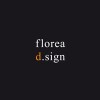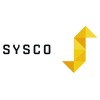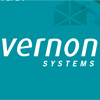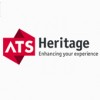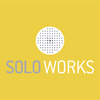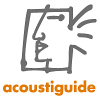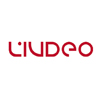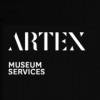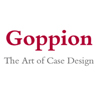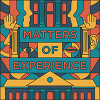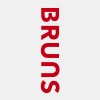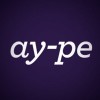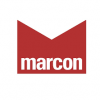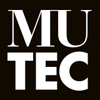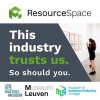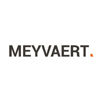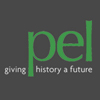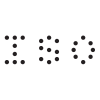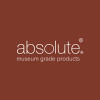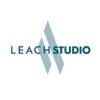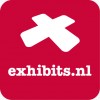
Iain Watson looks at the relationship between museums and stories and how stories are a way of creating meaning. In doing so he explores how the concept of ownership is developing and what this means for the role of museums in shaping as well as reflecting society.
This article will explore through a number of examples the relationships between museums and stories and how stories are a way of creating meaning. It will put this in the context of why museums do what they do, suggesting that the reason, within my own organisation at least, is ‘to make a difference’. It will also explore, through examples, the ownership of the stories which are displayed and expressed in museums, how the concept of this ownership is developing and what this means for the role of museums in shaping as well as reflecting society.
In his text book on communication theory (Griffin, 2003) E.A. Griffin, compares the approaches of the engineer Claude Shannon, one of the founders of communication theory, for whom “Communication is the transmission and the reception of information” with that of the philosopher I.A. Richards who wrote that “Communication is the generation of meaning.” Subsequent writers have developed these theories of communication.
I have always believed that museums are about communication – without people to communicate with there is no point in having museums. This is not a great philosophical point but a matter of fact. Museums could continue to exist without people but there would be little point. A number of years ago when Tyne & Wear Archives & Museums (TWAM) ran a management development session with senior managers they were asked what motivated them, what made them get up in the morning. The universal answer was they believed that their work made a difference in people’s lives.
I have always found Richards’ definition of communication to be relevant to work in museums. It seems to me to be exactly what museums should do and is enshrined in TWAM’s mission: Our mission is to help people determine their place in the world and define their identities, so enhancing their self-respect and their respect for others.
It is self evident that the meaning generated will often be individual. An encounter with a painting generates an individual response – a curatorial label may guide the response but the viewer is free to disagree with the curatorial interpretation as well as to accept it. Equally a user-generated interpretation can be the start of discussion and debate.
When you tell people that you work in museums they always want to share with you their thoughts about museums – almost everyone has experience of museums and has views about what they like and dislike. As well as all the people I meet who tell me what a great time they’ve had in our museums and galleries, one friend said to me, when I was talking about the improvements we’d been making to our museums and galleries, ‘Oh, but I loved the old museum in the town where I grew up. We used to play tig around the mahogany cases with the brass rails and then be chased by the museum attendants. It was great fun. That’s how museums should be.’ I guess this was a form of creating meaning – the meaning that she created was the museum was old and dull and slow and she was young and alive and fast. Maybe this museum experience was as important as any other!
At TWAM we have, for almost 20 years, taken a different approach to museums, believing that communication with the user should be a two way process and that displays, exhibitions and activities should, as a minimum, be responsive to the needs, wants and views of users and that in some cases the process can go much further with a shared approach to content creation. TWAM has a long track record of specific work involving communities in exhibition and programme development ranging from work in the late 1980s to include the voices of working class communities in the Great City display at Discovery Museum, a gallery which explores 20th century Newcastle, through ‘From the Vaults’ shows curated by community groups and the ongoing engagement of TWAM’s Museums and Galleries Disabled Access Group, to very active consultation and engagement on particular projects with, for example, the LGBT community for the ‘Private Lives, Public Battles’ exhibition which charted the history of the lesbian and gay movements in the North East and was shown at Discovery Museum in 2005, and consultation with specific interest groups for 2007’s ‘Remembering Slavery’ programme, co-ordinated as part of the commemoration of the 200th anniversary of the parliamentary abolition of the trans-Atlantic slave trade.
Whilst writing this article I visited Amsterdam and took the opportunity to visit, for the first time, the Anne Frank House Museum. The story of Anne Frank is one of the best known stories of our time. Indeed the strapline for the Museum is ‘Anne Frank House – a museum with a story.’ The Mission statement is: …It brings her life story to the attention of people all over the world to encourage them to reflect on the dangers of antisemitism, racism and discrimination and the importance of freedom, equal rights and democracy.
If ever an intuitive proof of the relationship between museums, stories and the opportunity to make a difference existed it must be this small museum which has daily queues from before it opens till closing time. Some people will choose not to visit the house because they would prefer not to be confronted with the horror of what people have done to each other. For those who do visit, however, we can only assume that what they experience has the potential to change the way they think and potentially act. Unsurprisingly the Anne Frank House Museum is very clear about what Ann’s story means and how we can engage with this story. Although specific to a particular place, a particular time, and a particular situation it is a universal story, both in terms of an individual visitor making a connection with an individual story and a more general societal horror. Here the setting and objects perfectly convey a story and a message.
In an internet published dissertation (Ferrer (2007)) Maria del Carmen Villaseñor Ferrer presents a review of storytelling in museums largely concentrating on formal storytelling but also examines the broader role the telling of stories can have in museum interpretation. She explains how storytelling can contribute to interpretation’s creation of meaning in two ways. The first the more literal interpretive process of explaining what the objects are and what their significance and context is and the second the establishment of the relation between objects, displays etc (the tools of the museum interpreter) and the individual allowing them to establish relationships with and make sense of these collections and displays.
Kevin Walker (Walker 2006) talked about involving users in the process of creating a trail tracking their museum visit, a narrative of their visit recording their thoughts and observations and then allowing them to return to it and continue to learn from it. Where I really agree with Walker is in his emphasis on the motivational environment provided by museums. This is something a number of commentators have emphasised and something that I think most people who work in museums and have an interest in communication and interaction with the public would subscribe to.
Walker wrote that: the notion of “learning objects,” which is so clearly defined in e-learning, becomes a matter of granularity in a physical space such as a museum. A learning object can literally be a physical object or artefact, or it can be a set of objects, an exhibit, or other location. It is also important to consider interactions with other learners, so we broadened the notion to “learning events.” This shifts focus from discrete objects to moments in time…moments of encounter. It emphasizes the active nature of learner interactions instead of the static nature of objects.
In conceiving of the museum visit as an experience of narrative creation and of the individual experience or learning event as a moment of storytelling or story making in its own right it is important to remember that whilst museums do have things which differentiate them from the outside world (objects are out of context and are ‘curated’ no matter whether that curation is based on academic input or is community curation). Just as in the theatre (and there are many similarities between museums and theatre) visitors suspend their disbelief whilst in museums in order to further their own learning experiences. This process may be either conscious or unconscious. The disbelief which requires suspension here is to believe that the diorama is a reality or that we can connect with the person who used a hand axe tens of thousands of years ago. As part of this it is important that museums do not work in a vacuum. We need to accept that we are unbreakably linked to the wider world. Even if the subject of your museum seems disconnected from the everyday word of your visitors, they will bring with them their everyday needs, frustrations, excitements, worries and desires. If we are publicly funded we need to understand and demonstrate the connectivity between what we do and the needs and aspirations of our users and our funders, who, ultimately, are one and the same.
In addition to its mission TWAM has set its priority areas to ensure that this connectedness runs throughout the organisation and all our activities relate to one of seven key priority areas which are derived from local and central government planning guidelines including in particular the approach to sustainable communities and to the society in which we live. The seven priority areas are: 1 Children and young people; 2 Economy, enterprise and regeneration; 3 Safer, stronger and healthier communities; 4 Lifelong learning for All; 5 Customer focused and learning organisation; 6 Collections Stewardship and Access; 7 Ensuring Sustainability.
Since 2003, with Renaissance investment, TWAM has been able to significantly develop this and has implemented an extensive programme of work with communities within Tyne and Wear and reached out further into other parts of the North East. Core to this work has been the development, through Renaissance funding, of the TWAM Outreach Team. Set up in 2004, this service was set up to engage people with TWAM collections through ‘bespoke’ projects. This work has had a strong focus on those who did not previously visit museums and galleries or engage with their collections. As a result the Outreach Team work closely with community groups and workers from statutory and voluntary sectors. One particular piece of work to come from this is ‘Culture Shock’, a project led by the North East Regional Museums Hub in partnership with Culture Unlimited and including the creation of over 500 digital stories by local people. The digital stories made by members of the North East community are available on the web, (www.cultureshock.org.uk), in museum exhibitions and in public broadcasts on BBC large screens and at other large scale events. In the summer of 2010 the team created ‘Culture Shop’ taking over a vacant shop in Newcastle’s Eldon Square Shopping Centre and screening the films which had been produced as well as running workshops to produce new ones. The stories created are accessioned into the museum collections as born-digital objects: local people are creating museum collections, and their creations consist of a narrative, a short story or script illustrated with approximately 6-8 images from museum collections and from their personal and family resources.
When talking about Culture Shock I have often reflected that storytelling is not only a way of creating meaning it’s still a powerful way of recording history and our knowledge of, for example, Anglo Saxon life is the greater for poems such as Beowulf – stories that record some of the minute details of everyday life as well as epic events. The project developed from the original Culture Shock report published by CLMG (now Culture Unlimited) in 2005 (Culture Shock 2005). The report emphasised the importance of listening and story-telling: the input and output sides of what museums do best – collecting stories and artefacts and replaying them through exhibitions, learning and interpretation. One of the proposals in the report was the collecting of new stories and artefacts and the Renaissance North East project has done this, selecting a wide variety of people across the North East with a mix of non-traditional audiences as well as people who make up the core of museum visitors.
People come together in workshops to create their digital story – meeting new people, visiting new areas and working in supportive environments. Starting from museum collections we’re specifically seeking to create dialogue about the region’s identity. We aim to promote greater understanding and awareness of the diversity of the region and, for example, challenge perceptions and prejudices between large urban areas/cities and rural areas. We also ensure participants’ access and engage with heritage – further than that they’ll be making their heritage. The creation of the stories is not an end in itself – they have an immediate use, and a longer term legacy. The stories are then broadcast in diverse media across the region and beyond to reach new audiences and use personal stories based around objects as the basis for developing citizenship and cohesion and challenging prejudice and intolerance. In 2010 stories created as part of the project were shown at the BFI on the South Bank as part of the London Lesbian and Gay Film Festival. Digital stories, of the kind users create as part of the Culture Shock project are different from other oral history work in museums. They fulfil a different purpose. Perhaps the fundamental difference is that they are less literal – they specifically encourage the creation of stories and are discursive in nature. From a museum point of view they complement other oral history work which may be designed to answer specific questions or to fill specific gaps in knowledge or collections, i.e. the focus is on the message not the medium and the process.
Culture Shock has allowed us to begin to explore cultural as well as individual identity. For this project we deliberately set out to survey a wide selection of people some of who are long established in the North East and some who are relatively recent arrivals. Within this large sample there will be many different cultural identities. In writing in particular about cultural identity and the Afro-Caribbean diaspora, Stuart Hall (Hall 1990) has suggested that there are two types of cultural identity. The first is the collective common identity – a perceived universal identity in which all members of that group share. The second is: a matter of ‘becoming’ as well as of ‘being’. It belongs to the future as much as to the past. It is not something which already exists, transcending place, time, history and culture. Cultural identities come from somewhere, have histories. But, like everything which is historical, they undergo constant transformation. Far from being eternally fixed in some essentialised past, they are subject to the continuous ‘play’ of history, culture and power. Far from being grounded in a mere ‘recovery’ of the past, which is waiting to be found, and which, when found, will secure our sense of ourselves into eternity, identities are the names we give to the different ways we are positioned by, and position ourselves within, the narratives of the past.
This is important because it offers the model for museums to free themselves from repeating stylised accounts of history and allows them to reflect, develop and contribute to defining the changing collective identities of our diverse and dynamic communities. Culture Shock has provided both projects where we have worked with a particular group and their 6-8 stories have themes that work together to talk about common issues as well as much more diverse groups where people are reflecting individual identity.
Although it seems that storytelling is common to every culture it may not be something that every individual within every culture is comfortable with. Storytelling demands a certain confidence in one’s voice and, in some cultures, the role of the storyteller is a specialist and prized one. Inclusive projects such as Culture Shock have broken down many of these barriers and reaffirmed that everyone has their own story and their own right to tell it. Recently, when researching with communities how Discovery Museum in Newcastle might continue to develop its role as a history museums with a strong participatory commitment we have moved to a new approach using participatory research techniques which differ significantly from the research/consultation techniques generally used in museums. We commissioned Durham University’s Centre for Social Justice and Community Action to lead this research for us: Rather than the usual approach of consulting stakeholders about a vision that has already been created, the Re-Visioning steering group had decided that they wanted the Re-Visioning process to go well beyond consultation. It commissioned this research to use more innovative and inclusive methods and approaches, that are inclusive and ground-up, and are open-ended, allowing audiences and other stakeholders to be part of creating a vision. TWAM already has a strong legacy of community outreach and engagement, and therefore a strong foundation on which to build.
Participatory research meets these goals well. It describes a family of approaches that involve those conventionally ‘researched’ in some or all stages of the process, from problem definition through to action (Pain 2004). Learning and action are important outcomes, alongside knowledge building. Participatory research therefore involves more collaborative, less hierarchical and less extractive approach to researching museum audiences. (Pain and Matthijsse 2010)
The work with over 250 participants, both visitors and non-visitors has used in particular participatory diagramming where graphic and/or tactile materials (often flipcharts, pens and other tools) are used by members of the group to create visual representations and express their ideas and in the process develop their understandings. Group members can participate without having to speak out and it is often used to draw out issues and encourage people to focus on developing discussion and on future actions.
There is a parallel here with our work to improve physical access for disabled people – if you improve physical access for this group it makes easier for everyone – whether it’s an older person, a parent or carer pushing a buggy or someone laden with shopping. Similarly our commitment to engagement with wide audiences runs right through what we do – it is key to the philosophy of the organisation and is reflected in our mission.
Storytelling is a key art of work with communities. It is an approach that opens up access and includes everyone. Many of our visitors will want to develop their interest or knowledge beyond this and it is important that there are ready routes forward into learning whether through formal learning programmes or through access to the resources held in museums and archives, which are heavily used for personal, educational and academic research. Equally it is important that museums provide spaces, real and virtual, for communities to tell stories and that these people have a real say in how the context for this storytelling is determined.
Iain Watson – Director, Tyne & Wear Archives & Museums
Notes | References | Bibliography
Culture Shock: Tolerance, Respect, Understanding…and Museums. Campaign for Learning in Museums and Galleries 2005
Ferrer, Maria del Carmen Villaseñor (2007) Building Echoes. The Role of Storytelling in Museums and Galleries uploaded 12/04/2009 consulted 30/08/09 http://www.scribd.com/doc/23684958/Building-Echoes-The-role-of-storytelling-in-museums-and-galleries
Fisher, M., et al. (2008), The Art of Storytelling: Enriching Art Museum Exhibits and Education through Visitor Narratives, in J. Trant and D. Bearman (eds.). Museums and the Web 2008: Proceedings, Toronto: Archives & Museum Informatics. Published March 31, 2008. Consulted August 29, 2010. http://www.archimuse.com/mw2008/papers/fisher/fisher.html
Griffin, E.A. (2003), A First Look at Communication Theory (5 ed.). Boston: McGraw-Hill
Hall, Stuart (1990) ‘Cultural Identity and Diaspora’ in J. Rutherford (ed.) Identity: Community, Culture, Difference. London: Lawrence and Wishart
Pain, Rachel and Matthijsse, Mathilde (2010) “In order that we can all touch our past”: Participatory Re-Visioning of Discovery Museum. Unpublished Research Report, Centre for Social Justice and Community Action Durham University
Paris, S.G. and Mercer, M.J. (2002) Finding self in objects: Identity exploration in museums in Leinhardt, G., Crowley, K. and Knutson, K. (Eds.) Learning Conversations in Museums. London: Erlbaum.
Walker K. (2006) Story structures. Building narrative trails in museums. In Technology-mediated Narrative. Environments for Learning (eds G. Dettori, T Giannetti, A Paiva – 2006 – Sense Publishers Rotterdam.




